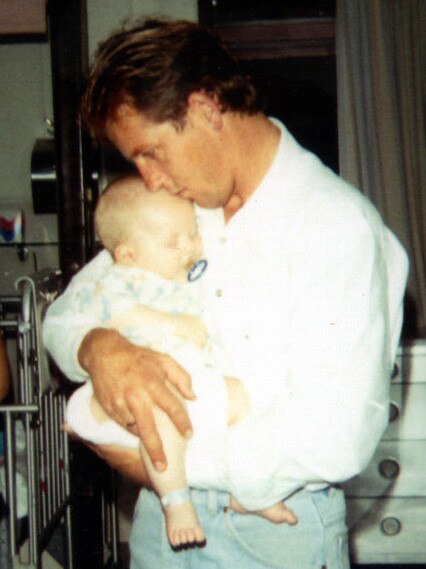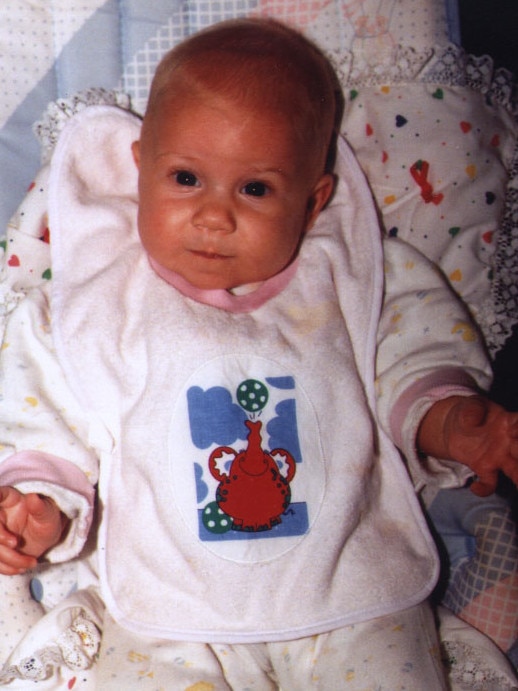Kathleen Folbigg says she was left black and bruised in prison bashing
Kathleen Folbigg has revealed she was brutally attacked in jail by a fellow inmate, as leading scientists call for her pardon based on new genetic evidence.
Behind the Scenes
Don't miss out on the headlines from Behind the Scenes. Followed categories will be added to My News.
Kathleen Folbigg, the mother convicted of killing four of her infant children, has disclosed in a letter to a pen pal that she was brutally attacked in prison by a fellow inmate after being transferred to a new prison in northern NSW.
The bashing left her with a black eye and bruises, details Folbigg described in a letter that was obtained by The Australian.
The attack occurred before New Year’s Eve,after the 53-year-old was transferred to the Clarence Correctional Centre in Grafton. She says that she was assaulted on New Year’s Day: “Purple eye, few bruises, all because the women didn’t want ‘likes of me’ in their unit,” she wrote, referring to her ‘baby killer’ and ‘killer mum’ image.
She said the bashing undid all the effort she had put into being accepted by the prison population at Sydney’s Silverwater. “It took me over 16 years to obtain some respect from staff and inmates and show them I am nothing like all the reports if you bother to get to know me. Here not even given the opportunity. Very sad.”

Her pen friend expressed concern for Folbigg’s safety and told The Australian: “I fear for her life while she is imprisoned. She continues to suffer physical, emotional and psychological trauma while she is incarcerated.” The friend added: “She needs to be released now.”
It comes as the NSW government considers a petition lodged by some of Australia’s leading scientists calling for a pardon for Folbigg.
Folbigg was convicted in 2003 of smothering her four infant children to death over a 10-year period from 1989 to 1999.
The evidence was largely based on her diary entries, that the jury was told amounted to confessions of guilt. She has always maintained her innocence but her conviction has been upheld through several legal challenges.
New evidence emerged last year of a mutant gene linked to sudden infant death and that gene is carried by two of the Folbigg children, suggesting they could have died from natural causes.
HOW PROFESSOR FOUND NEW GENETIC EVIDENCE IN FOLBIGG CASE
The scientist who uncovered new evidence casting doubt on Kathleen Folbigg’s guilt says she is just following the science, and had never heard of the woman convicted of killing her four children until she began work on her case.
Carola Vinuesa, a leading researcher and professor of immunology and genomic medicine at the Australian National University in Canberra, discovered a previously-unknown gene mutation in Folbigg and her two daughters, Laura and Sarah, which is strongly linked to sudden death in children and babies.
Professor Vinuesa was also responsible for recruiting the 90 eminent scientists and researchers, including two Nobel laureates, who last week put their names to an extraordinary petition calling for Folbigg to be pardoned and freed from jail.
Folbigg, from the Hunter Valley, was convicted in 2003 of smothering her four children – Patrick, Sarah, Laura and Caleb – but had always maintained her innocence and was convicted despite no forensic evidence that the children had been smothered. A number of court appeals against her convictions have failed and she is 18 years into a 30-year jail term.
Spanish-born Prof. Vinuesa, who arrived in Australia in 2000, had never heard of Folbigg until she was approached by Folbigg’s barrister Isabelle Reid in 2018, and had to do internet searches to learn who she was.

She said the evidence she and a team of experts uncovered was “black and white.’’
“This is about science being taken seriously,’’ she said.
“It’s not about Kathleen Folbigg, although of course it would be good if justice was done.
“So it’s a bigger issue, it’s about science and the law, it’s about this particular technology but it’s also about ensuring that science is weighed properly, so that’s what I think motivates many of us (the signatories to the petition).’’
Ms Reid asked Prof. Vinuesa if she was aware of any developments in genetic research since the 2003 trial.
Prof Vinuesa’s laboratory was doing similar work identifying genomes in patients with various diseases, and she agreed to sequence Kathleen Folbigg’s genomes as a starting point.
“It was a bit of a long shot but given that many of these conditions are inherited it is likely that if there was to be a genetic mutation it would have been inherited from the mother or the father or both,’’ she said.
Prof. Vinuesa and colleague Dr Todor Arsov led the research, with Dr Arsov visiting Folbigg at Sydney’s Silverwater Women’s Correctional Centre to take a saliva sample and use a Buchal swab to take cell samples from inside her mouth.
Their work revealed Folbigg had a previously-unknown mutation in the CALM2 gene, which was known to cause sudden cardiac death.
They then asked the Victorian Clinical Genomics Service to sequence the genomes of the four Folbigg children, using samples which were up to 20 years old, which identified the same mutation in the two Folbigg girls, inherited from their mother.
Further research is underway into the two little Folbigg boys.
Prof. Vinuesa reached out to Professor Peter J. Schwartz, a world-leading authority on genetic causes of sudden deaths, who is head of the Center for Cardiac Arrhythmias of Genetic Origin in Italy.
“I was surprised when I got a letter from Peter Schwartz and he told me, ‘look this is a pure coincidence but we just published a paper where we found a very similar mutation … very similar but not identical but being so similar this mutation has caused the death of a girl in the US and the cardiac arrest of her brother’.


“So he said at that point ‘I think this one is likely pathogenic’’ and when you say likely pathogenic, it means it has a high probability of causing death. So he agreed to submit a letter to the inquiry, I submitted it on his behalf.’’
The inquiry was being conducted by QC and former judge Reginald Blanch. However Mr Blanch declined to re-open his inquiry, and instead upheld Folbigg’s conviction.
Prof. Vinuesa said she had been “a little bit unsatisfied’’ at the Blanch inquiry because there had been no cardiac geneticist involved.


“I thought we might be missing something, myself being no expert in cardiac genetics.’’
She pushed on, contacting another international expert, Professor Michael Toft Overgaard from Denmark, who joined Prof Vinuesa and 25 other experts to continue their investigations.
“Then when that evidence came through and it was black and white and it showed this particular mutation was as damaging … as others that have been shown to be lethal in children.
“That paper was put together, was peer reviewed in a scientific journal and that constitutes additional, very strong evidence, that this mutation is probably the cause or a cause of natural death in the children that have it.’’
The 90 experts who signed a statement of scientific consensus this week include Nobel laureates Professor Peter Doherty and Emeritus Professor Elizabeth Blackburn, and scientists Professor Ian Frazer and Professor Fiona Stanley.
Prof. Vinuesa said it took less than 10 days to get almost 100 names for the petition, which was lodged with NSW Governor Margaret Beazley on Tuesday.
“The science was very strong, it wasn’t actually hard,’’ she said of the approaches made to the experts.
“I’m sure if we had gone for 100 days we would have got thousands.’’
More Coverage
Originally published as Kathleen Folbigg says she was left black and bruised in prison bashing





